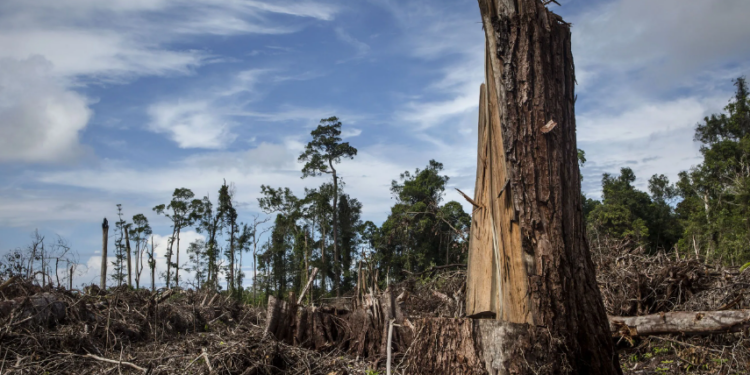The Daily Mail recently published a story claiming the world could face a mass extinction of plants and animals within less than 80 years, with more than a quarter of species dying by 2100. It was an eye-catching headline, timed of course to appear at the same time as the UN’s biodiversity conference. But curiously missing from the article, based on a recent science paper, was a note that most of the data underpinning the eco-scare were created by the authors of the report, while assumptions were made that global temperatures would rise by up to 5°C. Given that global temperatures have risen only 1.1°C over the last two centuries, and over the last two decades probably no more than 0.1°C, this looks a tad on the high side.
The report authors give considerable weight to the view that food chains are fragile in nature, and one extinction leads to another. This may be true in some cases, although most animals in the wild are resilient in adapting their diets to changing conditions. But building a media ‘mass death’ headline surely needs a few actual facts. The authors admit: “Apart from the obvious modelling and computational challenges to incorporate interactions among species, the main reason why there are few studies accounting for interactions is that obtaining sufficient data in most communities is intractable.” They add that an important caveat is that “while our virtual species are functionally realistic, they do not have taxonomic or phylogenetic meaning.” According to the Mail, the scientists aimed to build an “ecologically plausible Earth”.
Modelled results were obtained via a supercomputer assuming temperatures suddenly leap by between 4-5°C in just 80 years. The so-called ‘pathways’ feeding in these huge temperature rises are themselves the product of computers. But reality has started to bite in climate model circles with the realisation that their mock-ups are running far too hot. Four decades of wrong forecasts and the knowledge that global warming went off the boil two decades ago has led to a slight lowering of the various projections. But claiming that a quarter of species could disappear within 80 years as temperatures rise five times more than they have done for the last 200 is just fanciful speculation.
The Mail reported that the scientists’ tool can map extinctions everywhere on earth. It is said to confirm “beyond doubt” that the world is in the throes of its sixth mass extinction.
The sixth mass extinction scare is becoming very popular in climate Armageddon circles. Heavily promoted by the World Wildlife Fund, it has a lot going for it on the propaganda front, although some may quibble that it is notably short on actual proof. The International Union for Conservation of Nature (IUCN) lists 823 animals and plant species (mostly animals) that have gone extinct since 1500. If we are in the midst of the sixth mass extinction, as the Mail reports, we might have expected to be able to name more than 823 extinct species in 522 years.
Five years ago, the eminent Smithsonian paleontologist Doug Erwin dismissed sixth mass extinction talk as “junk science“. He went on to state that “many of those making facile comparisons between the current situation and past mass extinctions don’t have a clue about the difference in the nature of the data, much less how truly awful the mass extinctions recorded in the marine fossil record actually were”.
The Australian science blogger Jo Nova had an interesting take on the latest mass extinction science paper. “So a supercomputer adds up 15,000 webs of low level data on sloths, bark and butterflies, with error bars larger than trends, in systems we don’t understand, and a million lines of code, and extrapolates data up the kazoo – what could possibly go wrong?”
She goes on to quote Dr. Patrick Moore, co-founder of Greenpeace, who has noted that most of the species going extinct, “never existed in the first place”. Moore is another who is underwhelmed by extinction work produced by computers. He is unimpressed by estimates from the biologist Edward Wilson that 50,000 species go extinct every year. This estimate is based on computer models of the number of potential but as yet undiscovered species in the world.
“There’s no scientific basis for saying that 50,000 species are going extinct. The only place you can find them is in Edward O. Wilson’s computer at Harvard University. They’re actually electrons on a hard drive. I want a list of Latin names of actual species,” he wrote.
Finally, let us remember the Bramble Cay melomys, the first animal said to have become extinct due to human-caused climate change. Until recently, this little brown rat lived on a small sandy island off the coast of Australia. How it got there nobody knows, but rats are very resourceful and it probably hopped on a passing branch, said goodbye to a billion of its close relatives, and set sail. It liked its new home since there were plenty of blue turtle and birds eggs to eat. But, alas, its home was only three metres above sea level and the area prone to cyclones (your fault), so one day it got washed away. The Guardian was particularly taken with its sad end since it called for a “moment of silence”, and said it would “continue to fight for the things you believe in” – although presumably not eating blue turtle eggs.
Chris Morrison is the Daily Sceptic’s Environment Editor.










To join in with the discussion please make a donation to The Daily Sceptic.
Profanity and abuse will be removed and may lead to a permanent ban.